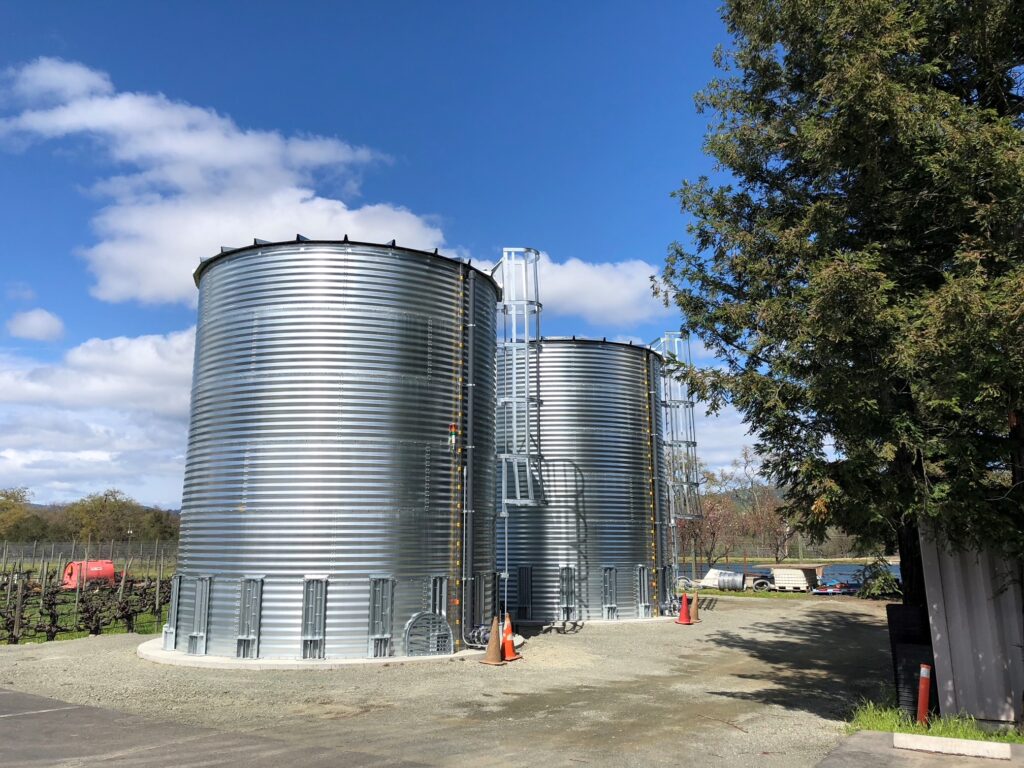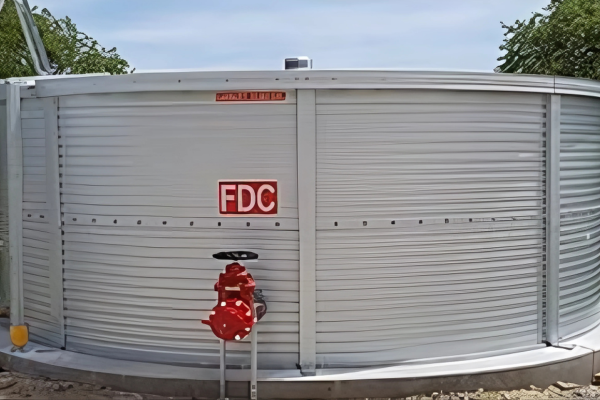Step 1: Assess Local Regulations
First, check local regulations regarding fire protection tank systems. It’s crucial to ensure compliance with local codes.
Step 2: Tank Sizing
Let’s start with tank sizing! The tank should be sized based on your estimated water demand and the fire flow requirements outlined in local codes. Typically, the Authority Having Jurisdiction or sometimes the Insurance Underwriter, makes the final decision.
Do you have required tank volume?”
Step 3: Choose Tank Type
Now, consider the type of tank you will need. Common types include:
Above-Ground Tanks – Generally speaking, above-ground tanks are less expensive than underground tanks. However, they require freeze protection in most of the USA. Also, the tank size is significant, and require space and aesthetic considerations.
Welded Steel – These tanks are still the industry standard, but are becoming less common due to the rise in popularity of the corrugated steel liner tanks. Common complaints about welded steel tanks are the high cost, long lead times, relatively short warranty period, and maintenance requirements.
Bolted and Gasketed Steel – Another legacy product. These tanks generally meet all the approvals.
Corrugated Steel with Liner – Usually less expensive to buy and maintain, and also with a longer warranty, Corrugated Steel Tanks are quickly rising in popularity. However, the construction method does not meet the prescriptive aspects of the NFPA-22 and AWWD103 standards. Many local officials are are approving them.
Underground Tanks
Concrete – Unlimited in size and configuration, but relatively expensive to install and maintain.
Fiberglass – By far the most common underground tank type, but still expensive to install.
Step 4: Available Tank Sizes
Now let’s look at available tank sizes for all types:
Underground Fiberglass Tanks: https://georgiawatertanks.com/products/underground-water-tank-cistern/
Above-Ground Corrugated Steel Liner Tanks: https://georgiawatertanks.com/design/above-ground-steel-tanks-models-and-sizes/
Have you found a suitable tank size for your fire protection system?
Step 5: Tank Interconnection
Connect your tanks using flexible piping to ensure proper water flow and access for maintenance.
Step 6: Pump Selection
For fire protection systems, ensure you select a pump that meets the flow rate and pressure requirements for your specific application.”
Do you need assistance in choosing the right pump?
Step 7: Freeze Protection
If you’re in a region where temperatures may fall below 40°F, you will need to consider adding insulation or a heating element to prevent freezing. Local code officials will often waive the requirement, here it Georgia. Would you like more information on freeze protection options?
Conclusion
Thank you for your interest in fire protection tank systems! If you have more questions or need further assistance, just let me know!

